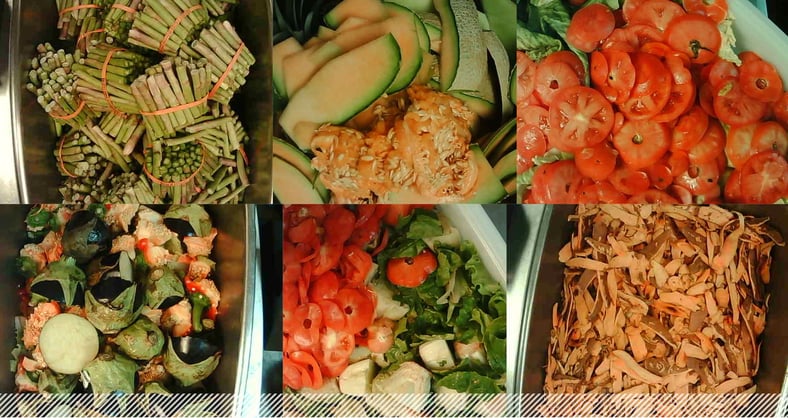4 questions to reveal whether your kitchen's trim waste is under control

Trim waste is the second largest source of food waste in kitchens, just behind overproduction. Some trim waste is unavoidable. Regardless, it all represents a financial hit: while you may not eat an orange peel, your kitchen still paid for it. And protein trimmings are most costly than ever.
So it’s important to make sure your kitchen accumulates as little trim waste as possible.
To help with that, here are four questions to ask your kitchen manager, chef or frontline team to make sure reducing trim waste is top of mind.
Question #1: Are spot checks being done in the trim waste bin to ensure usable product isn’t being wasted?
Answer you want to hear: We spot check every prep period and at the end of each service.
Chefs should be walking through their kitchen spot checking the trim waste bin. (Or if you have a camera-equipped Leanpath Tracker, reviewing food waste photos.) Spot checking lets the chef understand if staff are wasting food because of poor knife skills. Spot checking also lets the staff know that reducing waste is always on our minds. If they know the chef looks, they are much more efficient with their knives and conscious of the trim.
Question #2: Have cooks been given refresher knife skill demos?
Answer you want to hear: All the cooks that have any type of responsibility for preparing food with a knife are given periodic knife skill demos.
You can’t assume that people who work in a kitchen have adequate knife skills. Chefs need to be aware of the various levels of skill that their staff has with a knife. If they see areas of improvement, it is the chef’s responsibility to teach those skills to their staff. If all our cooks are really skilled with a knife, and they know how to get the most yield out of usable product, we can reduce our food waste.
Question #3: Are all cooks responsible for fabricating all food product or are there cooks designated to deal with just the high-dollar items like meat, fish and shellfish?
Answer you want to hear: We train all cooks to be as efficient and skilled with their knives as we can, but we realize some are better than others.
While we can train proper knife skills, the fact is some kitchen staff will be more adept at fabrication than others. Make sure your most skilled staff are working with the more expensive items.
Question #4: Is your team being creative with repurposing trim when possible?
Answer you want to hear: Yes. We have brainstorming sessions with the team to come up with repurposing ideas and incorporate the most promising ones.
Peels, pulp, cores, rinds, stems. When you prep fruits and vegetables you end up with trim. But that trim doesn’t have to lead to trim waste. You can maximize usage of this product, making better use of your food spend along the way. Here are 18 creative and efficient ways to repurpose vegetable and fruit trim.
For more ideas on tracking common food waste sources, check out our e-book Getting to the Bottom of Top Food Waste Sources.
Sign up for our monthly newsletter for the latest in
food waste prevention initiatives, best practices, webinars and more.